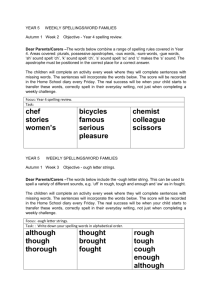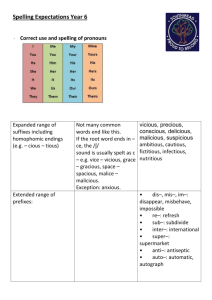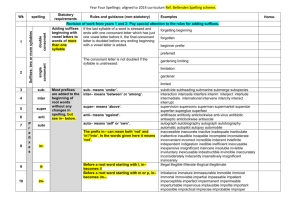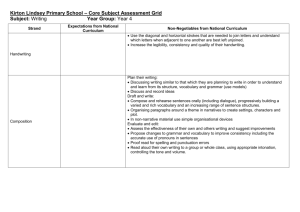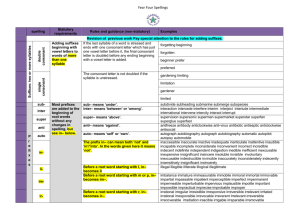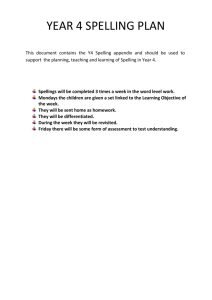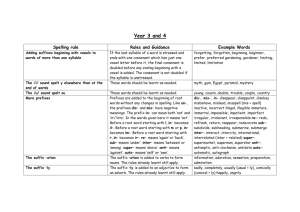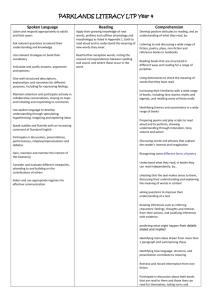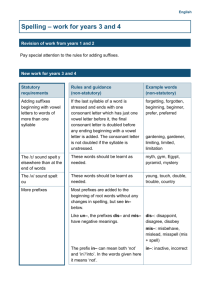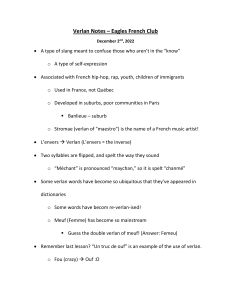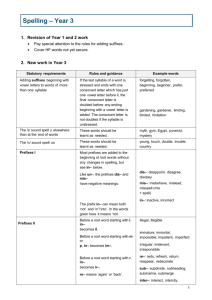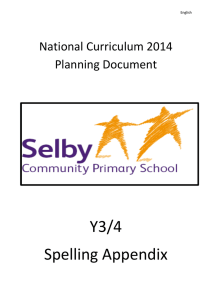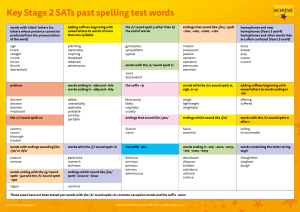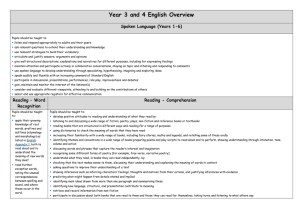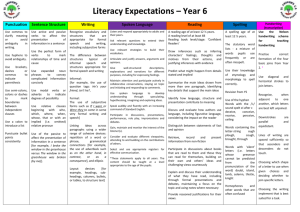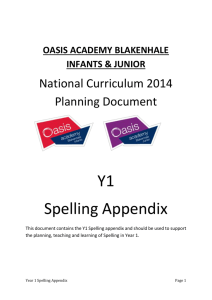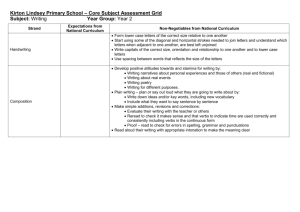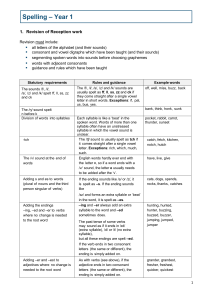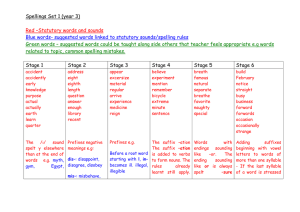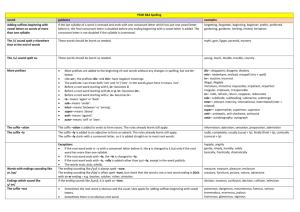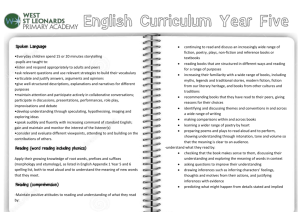Word list * years 3 and 4
advertisement
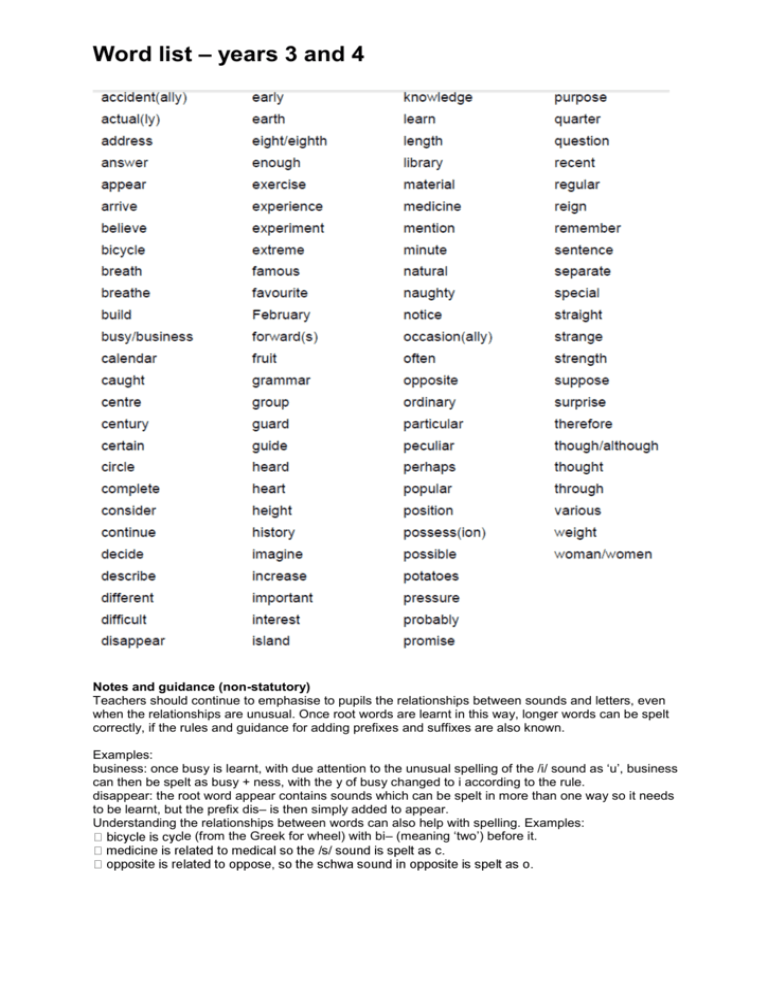
Word list – years 3 and 4 Notes and guidance (non-statutory) Teachers should continue to emphasise to pupils the relationships between sounds and letters, even when the relationships are unusual. Once root words are learnt in this way, longer words can be spelt correctly, if the rules and guidance for adding prefixes and suffixes are also known. Examples: business: once busy is learnt, with due attention to the unusual spelling of the /i/ sound as ‘u’, business can then be spelt as busy + ness, with the y of busy changed to i according to the rule. disappear: the root word appear contains sounds which can be spelt in more than one way so it needs to be learnt, but the prefix dis– is then simply added to appear. Understanding the relationships between words can also help with spelling. Examples: le (from the Greek for wheel) with bi– (meaning ‘two’) before it. Word list – years 5 and 6 Notes and guidance (non-statutory) Teachers should continue to emphasis to pupils the relationships between sounds and letters, even when the relationships are unusual. Once root words are learnt in this way, longer words can be spelt correctly if the rules and guidance for adding prefixes and suffixes are also known. Many of the words in the list above can be used for practice in adding suffixes. Understanding the history of words and relationships between them can also help with spelling. Examples: Conscience and conscious are related to science: conscience is simply science with the prefix conadded. These words come from the Latin word scio meaning I know. The word desperate, meaning ‘without hope’, is often pronounced in English as desp’rate, but the – sper- part comes from the Latin spero, meaning ‘I hope’, in which the e was clearly sounded. Familiar is related to family, so the /ə/ sound in the first syllable of familiar is spelt as a.
